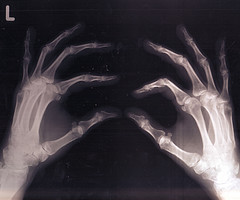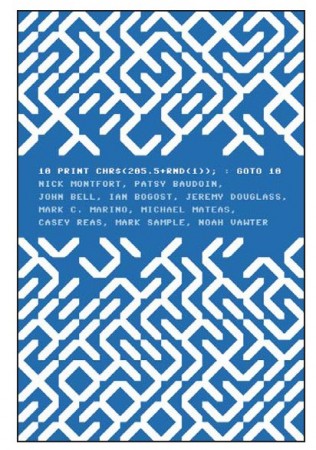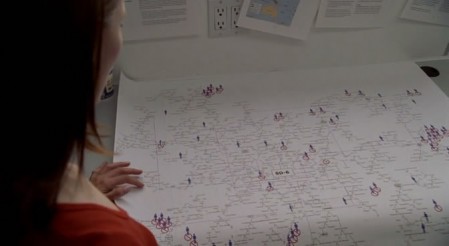When does service become scholarship?
When does anything—service, teaching, editing, mentoring, coding—become scholarship?
My answer is simply this: a creative or intellectual act becomes scholarship when it is public and circulates in a community of peers that evaluates and builds upon it.
Now for some background behind the question and the rationale for my answer.
What counts as the threshold of scholarship has been on my mind lately, spurred on by two recent events at my home institution, George Mason University. The first was a discussion in my own department (English) about the public humanities, a concept every bit as hard to pin down as its two highly contested constitutive terms. A key question in the department discussion was whether the enormous amount of outreach our faculty perform—through public readings, in area high schools, with local teachers and lifelong learners outside of Mason—counts as the public humanities. I suggested at the time that the public humanities revolves around scholarship. The question, then, is not when does outreach become the public humanities? The question is, when does outreach become an act of scholarship?
The department discussion was a low-stakes affair. It decided the fate of exactly nothing, except perhaps the establishment of a subcommittee to further explore the intersection of faculty work and the public humanities.
But the anxiety at the heart of this question—when does anything become scholarship?—plays out in much more consequential ways in the academy. This brings me to the second event at Mason, the deliberations of the College of Humanities and Social Science’s Promotion and Tenure committee. My colleague Sean Takats, whom some may know as the Director of Research Projects for the Roy Rosenzweig Center for History and New Media and the co-director of the Zotero project, has recently given a devastating account of the RPT committee’s response to his tenure case. Happily, the college committee approved Sean’s case 10-2, but what’s devastating is the attitude of some members of the committee toward Sean’s significant work in the digital humanities. Sean quotes from the committee’s official letter, with the money quote being “some [committee members] determined that projects like Zotero et al., while highly valuable, should be considered as major service activity instead.”
Sean deftly contrasts the committee’s impoverished notion of scholarship with Mason’s own faculty handbook’s definition, which is more expansive and explicitly acknowledges “artistic work, software and media, exhibitions, and performance.”
I absolutely appreciate Mason’s definition of scholarly achievement. But I like my definition of scholarship even more. Where does mine come from? From the scholarship of teaching—another field, like digital humanities, which has challenged the preeminence of the single-authored manuscript as the gold standard of scholarship (though, like DH, it doesn’t exclude such forms of scholarship).
More specifically, I have adapted my definition from Lee Shulman, the former president of the Carnegie Foundation for the Advancement of Teaching. In “Taking Learning Seriously,” Shulman advances a persuasive case for the scholarship of teaching and learning. Shulman argues that for an intellectual act to become scholarship, it should have at least three characteristics:
In other words, scholarship is public, circulating in a community that not only evaluates it but also builds upon it. Notice that Shulman’s formulation of scholarship is abstracted from any single discipline, and even more crucially, it is platform-agnostic. Exactly how the intellectual act circulates and generates new work in response isn’t what’s important. What’s important is that the work is out there for all to see, review, and use. The work has been made public—which after all is the original meaning of “to publish.”
Let’s return to the CHSS committee’s evaluation of Sean’s work with Zotero. I don’t know enough about the way Sean framed his tenure case, but from the outside looking in, and knowing what I know about Zotero, it’s not only reasonable to acknowledge that Zotero meets these three criteria of scholarship (public, reviewed, and used), it’d take a willful misapprehension of Zotero, its impact, and implications to see it as anything but scholarship.
Sean notes that the stance of narrow-minded RPT committees will have a chilling effect on digital work, and I don’t think he exaggerates. But I see this as a crisis that extends beyond the digital humanities, encompassing faculty who approach their scholarship in any number of “unconventional” ways. The scholarship of teaching, certainly, but also faculty involved in scholarly editing, the scholarship of creativity, and a whole host of public humanities efforts.
The solution—or at least one prong of a solution—must be for faculty who have already survived the gauntlet of tenure to work ceaselessly to promote an atmosphere that pairs openness with critical review, yet which is not entrenched in any single medium—print, digital, performance, and so on. We can do this in the background by writing tenure letters, reviewing projects, and serving on committees ourselves. But we can and should also do this publicly, right here, right now.




